Breathing through a snorkel takes some practice, but most people can master it quickly. Snorkeling lets you observe marine life up close while floating on the water. If you're new to the activity or preparing for a beach trip, learning the right breathing method will make you feel more at ease. This guide explains the essential techniques to help you stay relaxed and safe in the water.

Snorkel Parts and Position
A properly chosen and correctly fitted snorkel makes a big difference in your swimming comfort and safety. The right gear lets you focus on watching the sea life instead of adjusting equipment.
Main Parts
The snorkel consists of three key components. The tube creates a path for air and usually extends 12 to 15 inches above your mouth. The mouthpiece fits between your teeth and lips - it's made from soft silicone or rubber for comfort. The purge valve sits at the bottom and works like a drain, letting water exit while blocking it from coming back in.
Positioning and Fit
Place the snorkel clip on the left side of your mask strap. Your jaw should rest naturally when holding the mouthpiece - no stretching or straining needed. Keep the mouthpiece between your teeth with your lips sealed around it. The mask strap should hold steady without being too tight.
Above-Water Tube Rules
The tube's top must stay above water for proper breathing. When you look down, the tube should point straight up. A sideways or angled tube lets water splash in easily. Most tubes come with a slight curve to help them stay upright as you swim. Watch the tube position whenever you turn your head.
Pre-Swim Step: Snorkel Safety Checks
The right preparation helps prevent water leaks and breathing problems once you're swimming. These simple checks take just a few minutes but can save you from frequent stops to adjust your gear.
Check Your Mouthpiece Seal
A tight seal around your mouthpiece prevents water from entering. With the mouthpiece between your teeth, close your lips firmly around it. Several slow breaths while covering the tube's top should create slight resistance with no leaks. The air should flow smoothly when the tube is uncovered, with no gaps around your lips.
Set Your Mask Strap
The proper strap position lies at the crown of your head. A gentle pull should keep the mask stable during facial movements or smiles. Tight straps that leave marks need adjustment. Your mask should maintain firm contact without creating pressure points.
Practice in Shallow Water
Time in shallow water builds confidence with your snorkel. Your practice spot should be waist-deep, near a wall or edge for support. Thirty seconds of slow breathing with your face down helps develop comfort. Head movements while keeping the tube up improve your control. Regular practice leads to natural breathing patterns.

How to Breathe with Your Snorkel
A relaxed breathing pattern through your snorkel helps you save energy and stay comfortable in the water. Proper breathing techniques prevent exhaustion and let you swim longer.
Seal Your Lips
A proper seal forms the base of good snorkel breathing. Your lips should wrap completely around the mouthpiece ridges with no gaps. The mouthpiece sits between your front teeth, not your back teeth. Your tongue should stay behind your teeth to avoid blocking airflow. Many beginners leave small gaps at the corners of their mouth - check these spots specifically for leaks.
Control Your Breath
Slow, deep breaths work better than rapid, shallow ones. Each breath should last about 2-3 seconds in and out, just like normal breathing on land. Your chest should rise and fall steadily. Short, quick breaths can cause hyperventilation and dizziness. If you start breathing too fast, take a break at the surface and reset your breathing pattern.
Find Your Rhythm
A steady breathing pattern helps you stay calm in the water. Take full breaths that fill your lungs about 70-80% - not too shallow but not straining. Count silently to maintain even timing: "one-two" for inhaling, "one-two" for exhaling. Focus on smooth transitions between breaths rather than holding your breath. When you need a short rest, float face down and take 4-5 slow, controlled breaths.
Relax Your Jaw
Many snorkelers clench their jaw too tightly, causing muscle fatigue within minutes. Hold the mouthpiece firmly enough to maintain the seal but no tighter - you should be able to easily open your mouth slightly without dropping it. If you feel tension in your temples or jaw muscles, you're biting too hard. Take breaks every 15-20 minutes to relax your jaw muscles. Moving your jaw gently side to side during breaks helps reduce stiffness.
Three Ways to Clear Water from Your Snorkel
Even experienced snorkelers occasionally get water in their tubes. Two reliable methods and a helpful valve feature can quickly clear your airway.
Blow Hard and Fast
A sharp, forceful exhale pushes water out through the top of your snorkel. The key is to blow hard and fast, similar to blowing out birthday candles. Keep your head still during the blast to prevent more water from entering. This method works well for small amounts of water and requires less energy than other techniques.
Rise and Breathe Out Slowly
This gentle technique works by slowly surfacing while exhaling steadily. As your snorkel rises above water, your breath naturally pushes the water out. Keep exhaling until your snorkel is completely above the surface. This method helps prevent water droplets from falling back into the tube and works well in choppy conditions.
Push Water Through the Purge Valve
Modern snorkels often include a one-way valve at the bottom. When water enters your snorkel, it collects in a small chamber near this valve. A normal exhale pushes the water out through the valve instead of requiring a forceful blast. The valve then closes to prevent water from re-entering. Regular valve cleaning keeps this feature working properly.
Quick Safety Tips
- Always clear your snorkel before inhaling if you suspect water has entered
- Practice these clearing methods in shallow water first
- Pick the method that feels most comfortable to you - all three work effectively
- Check your purge valve regularly for trapped sand or debris that might prevent proper sealing
These water-clearing skills become second nature with practice. The ability to quickly clear your snorkel helps you stay relaxed and confident in the water.

Common Snorkel Problems and Solutions
Each snorkeler may face several basic challenges. Here are the most frequent issues and practical ways to solve them.
Water Keeps Splashing In
Problem: Waves and splashes enter your snorkel tube, especially in choppy water. This happens more when you swim against waves or if your head position changes frequently.
Solution: Tilt your head slightly forward, about 15 degrees from vertical. This angle helps water run off the tube instead of entering it. In choppy water, stay within 6 inches of the surface and swim parallel to the wave direction. Side-breathing (turning your head away from oncoming waves) also reduces water entry.
Too Much Saliva
Problem: Salt water often makes you produce extra saliva, which can interrupt your breathing rhythm.
Solution: Rinse your mouth with fresh water before snorkeling. Small sips of water during breaks help wash away salt. If needed, take a quick break every 15-20 minutes to remove your mouthpiece and clear saliva. Staying well-hydrated before snorkeling also helps reduce excess saliva.
Sudden Water Entry
Problem: A large wave or wrong head movement can flood your snorkel quickly, causing surprise and potential panic.
Solution: Surface calmly and maintain steady breathing - water in your snorkel can't enter your lungs. Roll onto your back if needed. Once stable, clear the tube using your preferred method. Regular practice of clearing techniques in shallow water builds confidence for these situations.
Heavy Breathing
Problem: The snorkel's narrow tube creates natural breathing resistance. Many beginners feel they can't get enough air, leading to rapid, shallow breathing.
Solution: Start with 10-minute sessions to build breathing strength. Focus on steady, full breaths rather than quick ones. Your breathing muscles will adapt within a few swimming sessions. Take regular rest breaks rather than pushing through fatigue.
Regular practice in calm water makes these challenges manageable. Most snorkeling problems improve with proper technique and patience.

Advanced Snorkel Skills for Experienced Swimmers
With practice, many snorkelers want to move beyond basic surface swimming. Several advanced skills open up new ways to explore and swim more effectively in different conditions.
Duck Diving with a Snorkel
Duck diving lets you swim briefly underwater to get a closer look at marine life. Take a full breath at the surface. Bend at your waist and point your fins up while pushing your upper body down. Keep your snorkel in your mouth during the dive - it will fill with water. Stay underwater for no more than 15 to 20 seconds. As you surface, maintain a forward tilt and clear your snorkel before taking your first breath.
Swimming in Rough Seas
Choppy conditions need special techniques. Keep your face angled slightly downward to reduce wave impact. Time your breaths between wave sets - watch the wave pattern and breathe during calmer moments. Maintain a steady forward motion rather than stopping and starting. Position yourself so waves hit your side rather than coming straight at your snorkel.
Extended Distance Techniques
Longer snorkel sessions require careful breath management. Set a steady pace with consistent breath lengths. Take a 30-second floating rest every 10-15 minutes. Watch for signs of fatigue like faster breathing or difficulty maintaining your position. Good fin technique helps conserve energy and reduces the work your lungs must do.
Quick Mask Removal and Replacement
Sometimes you need to switch between your snorkel and regular breathing. Remove your mask while keeping the snorkel in place. Practice breathing through your mouth only - avoid nose breathing when the mask is off. Replace your mask by pulling it down first, then sliding it up your face to prevent hair tangles. Clear any water from your mask before resuming snorkel breathing.

Ready for the Water With Your Snorkel!
Snorkeling opens up a fascinating underwater world, and proper breathing technique makes it both safe and enjoyable. For beginners and experienced snorkelers alike, the G2RISE Snorkeling Gear Mask offers exceptional comfort with its advanced airflow system and fog-free view. Start with gear checks and shallow water practice to build confidence. As you master breathing and water-clearing skills, you'll handle common challenges easily. Before long, you'll be ready for advanced skills like duck diving and rough water swimming.
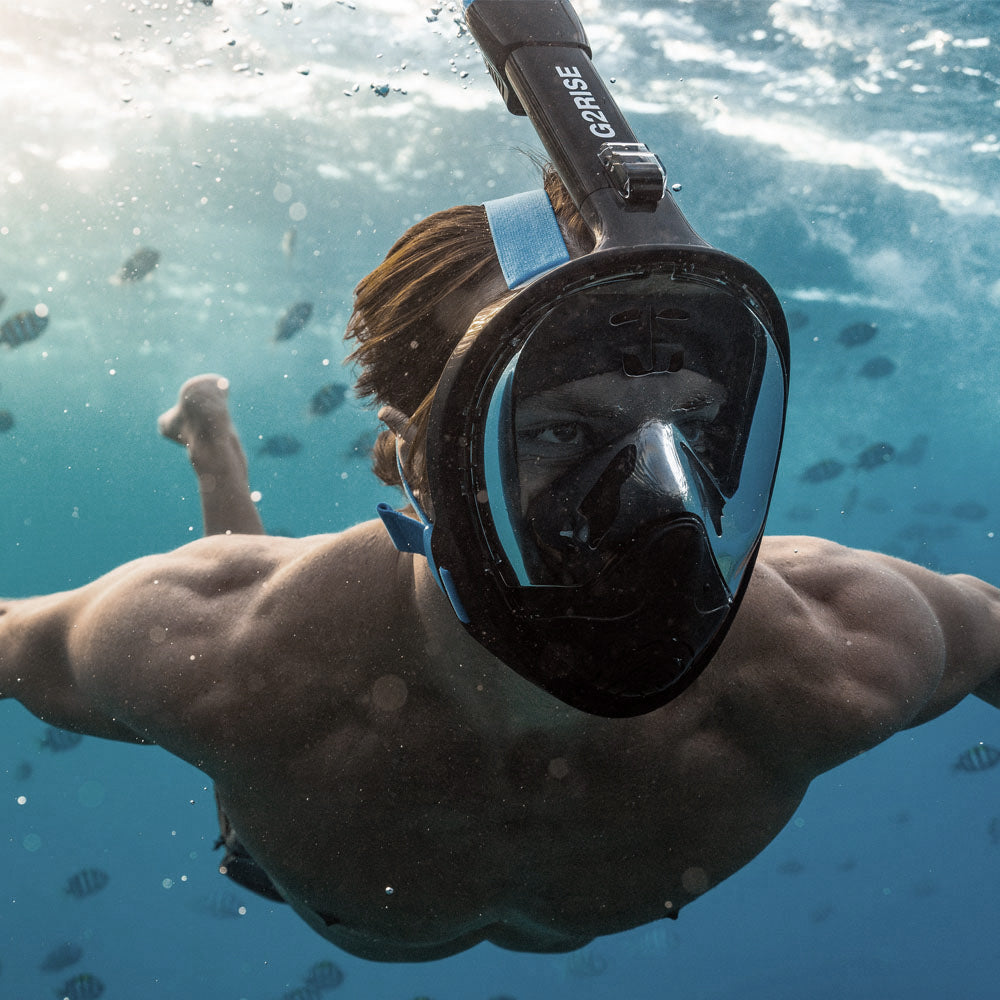
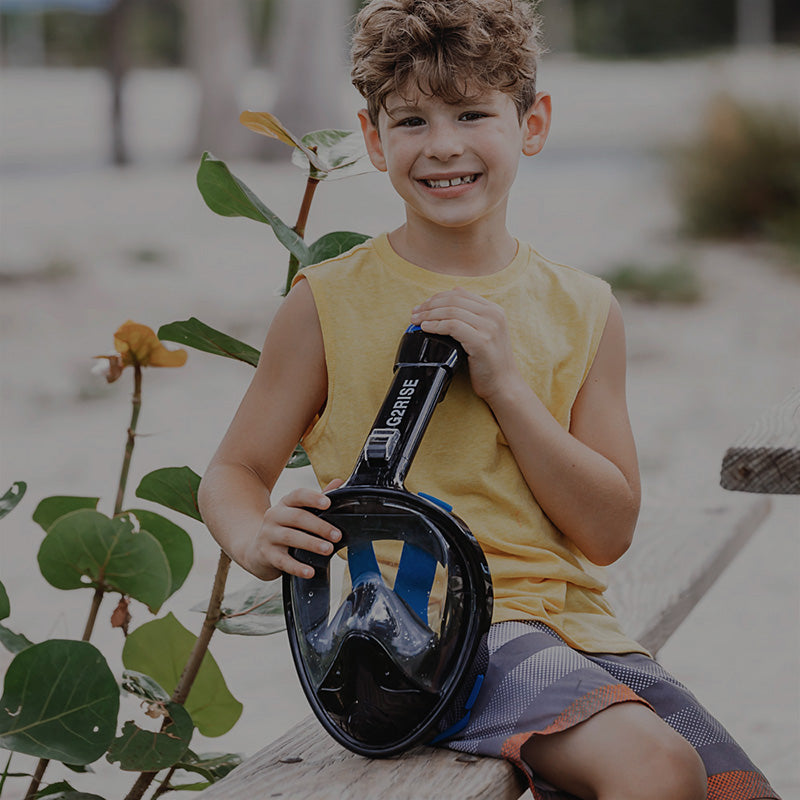
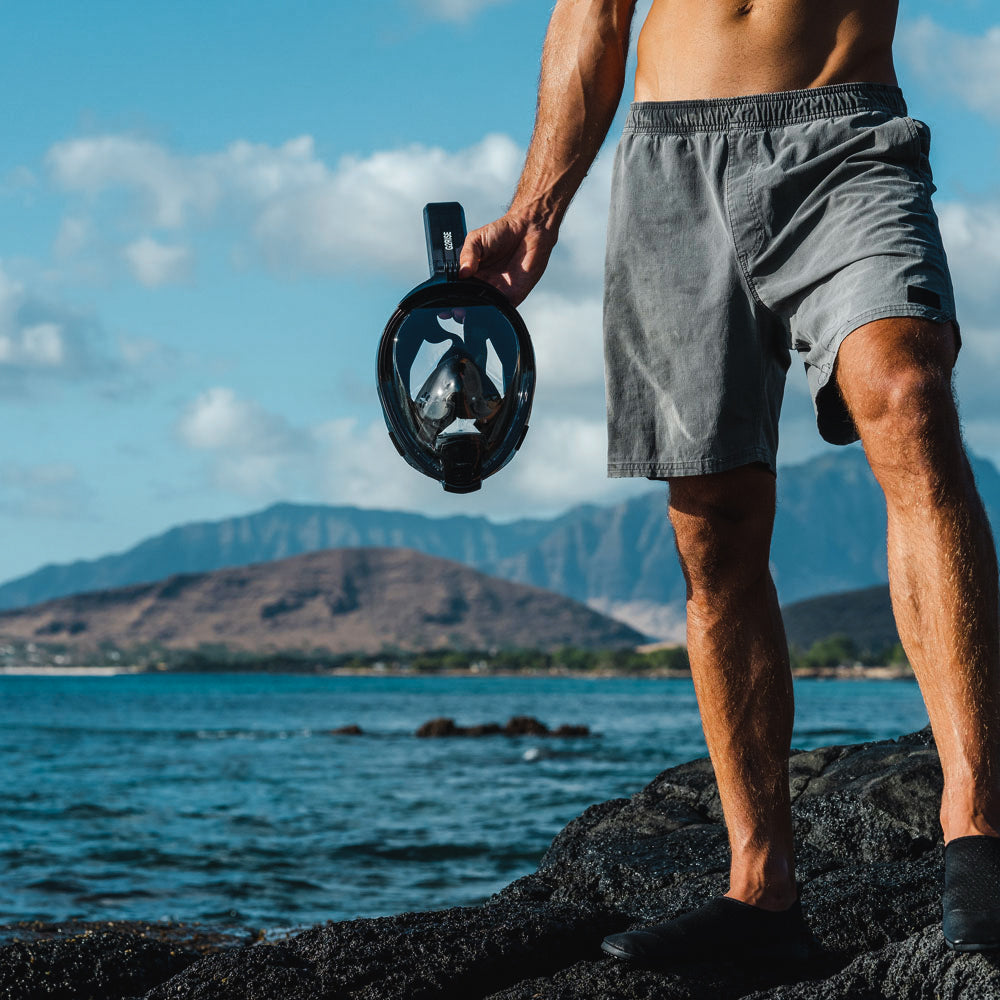

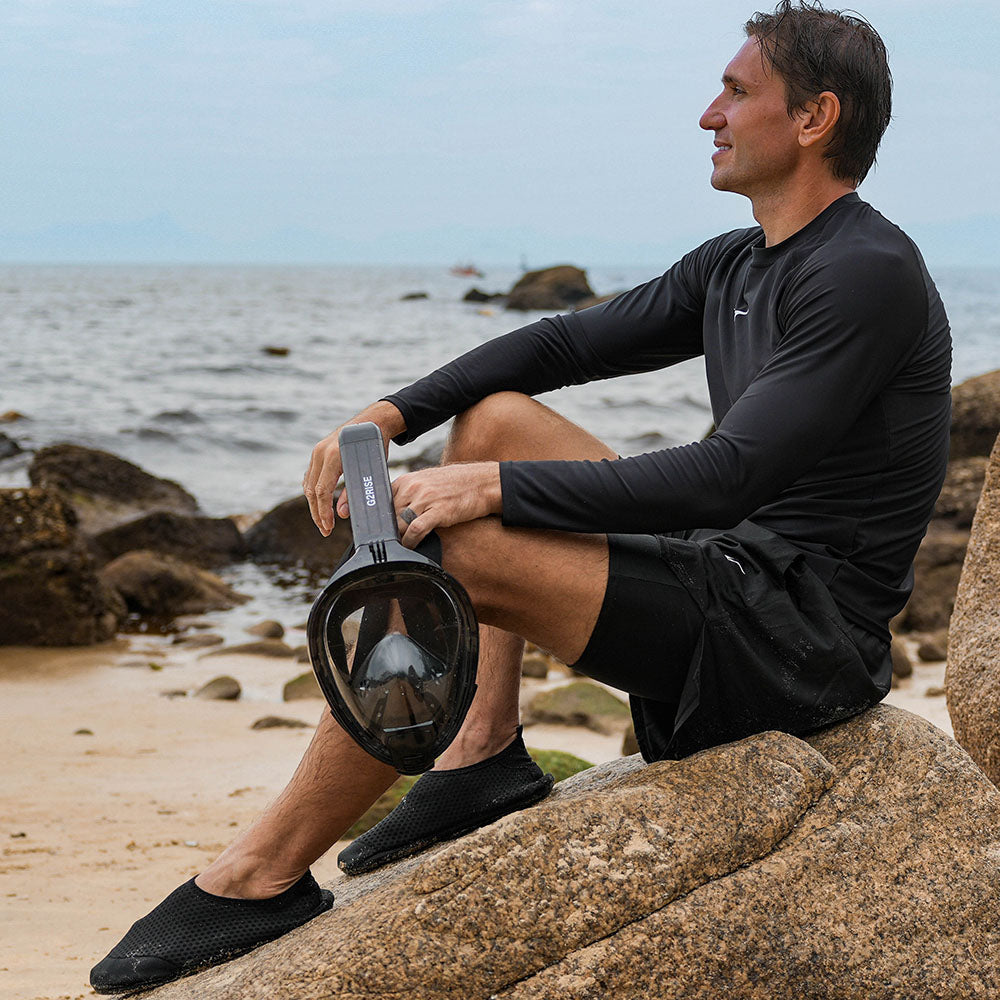

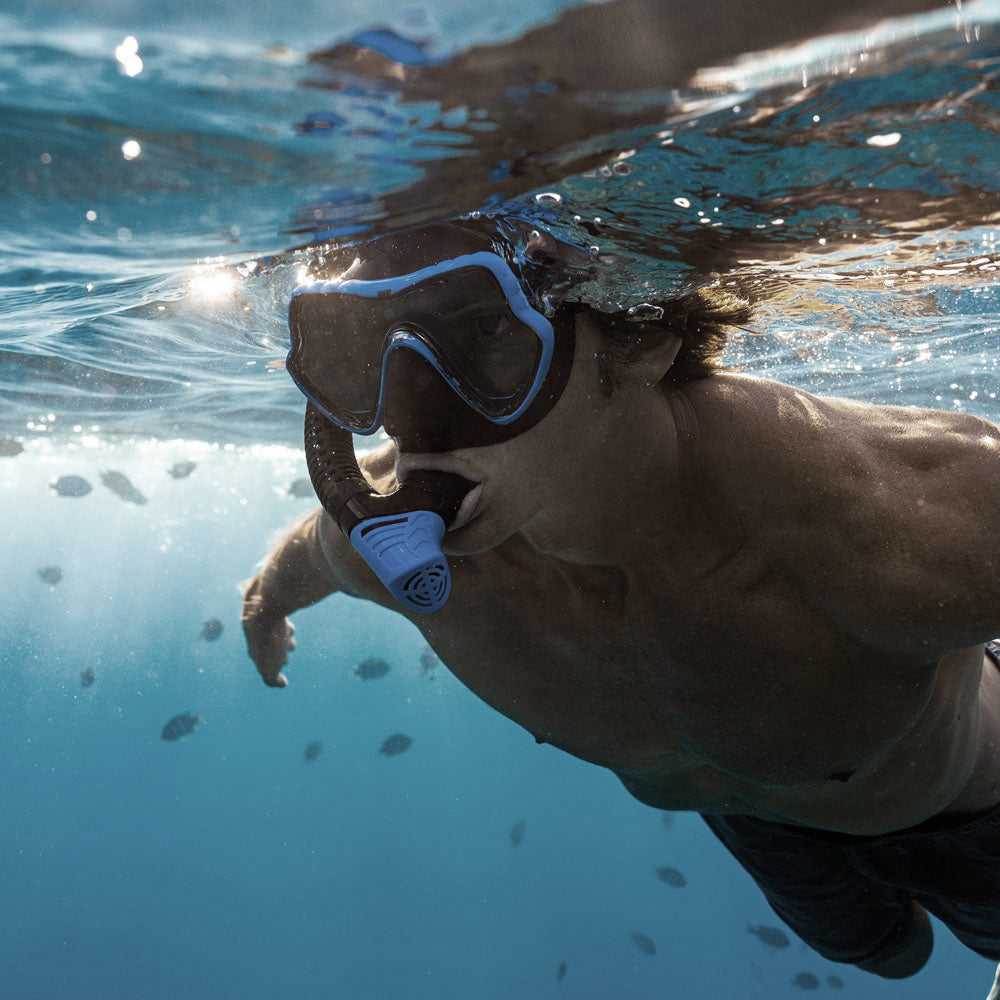

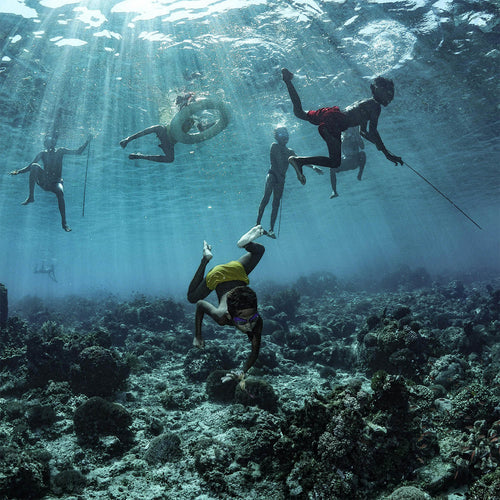
Leave a comment
This site is protected by hCaptcha and the hCaptcha Privacy Policy and Terms of Service apply.